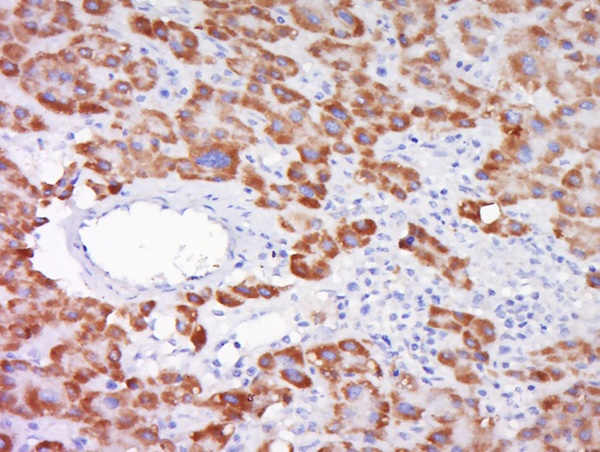SOD (Cu/Zn) Antibody (OASE00355)
OASE00355
ApplicationsImmunoPrecipitation, Western Blot, ELISA, ImmunoHistoChemistry
Product group Antibodies
TargetSOD1
Overview
- SupplierAviva Systems Biology
- Product NameSOD (Cu/Zn) Antibody (OASE00355)
- Delivery Days Customer23
- ApplicationsImmunoPrecipitation, Western Blot, ELISA, ImmunoHistoChemistry
- CertificationResearch Use Only
- ClonalityPolyclonal
- Concentration1 mg/ml
- ConjugateUnconjugated
- FormatLiquid. In PBS pH7.0, 50% glycerol, 0.1% sodium azide
- Gene ID6647
- Target nameSOD1
- Target descriptionsuperoxide dismutase 1
- Target synonymsALS, ALS1, HEL-S-44, IPOA, SOD, STAHP, hSod1, homodimer, superoxide dismutase [Cu-Zn], Cu/Zn superoxide dismutase, SOD, soluble, epididymis secretory protein Li 44, indophenoloxidase A, superoxide dismutase 1, soluble, superoxide dismutase, cystolic
- HostRabbit
- Scientific DescriptionSuperoxide dismutase (SOD) is an endogenously produced intracellular enzyme present in almost every cell in the body (3). It works by catalyzing the dismutation of the superoxide radical O2% to O2 and H2O2, which are then metabolized to H2O and O2 by catalase and glutathione peroxidase (2,5). In general, SODs play a major role in antioxidant defense mechanisms (4). There are two main types of SOD in mammalian cells. One form (SOD1) contains Cu and Zn ions as a homodimer and exists in the cytoplasm. The two subunits of 16 kDa each are linked by two cysteines forming an intra-subunit disulphide bridge (3). The second form (SOD2) is a manganese containing enzyme and resides in the mitochondrial matrix. It is a homotetramer of 80 kDa. The third form (SOD3 or EC-SOD) is like SOD1 in that it contains Cu and Zn ions, however it is distinct in that it is a homotetramer, with a mass of 30 kDA and it exists only in the extra-cellular space (7). SOD3 can also be distinguished by its heparin-binding capacity (1).
- Storage Instruction-20°C
- UNSPSC12352203







